Welcome to Ceramic Review
Ceramic Review is the magazine for contemporary and historical ceramics, ceramic art and pottery.
Ceramic Review Issue 334
July/August 2025
Ceramic Review is the magazine for contemporary and historical ceramics, ceramic art and pottery.
July/August 2025
Beth Williamson visits Strange Clay, a new exhibition at the Hayward Gallery and discovers a selection of ceramic art that is challenging perceived ideas about the medium
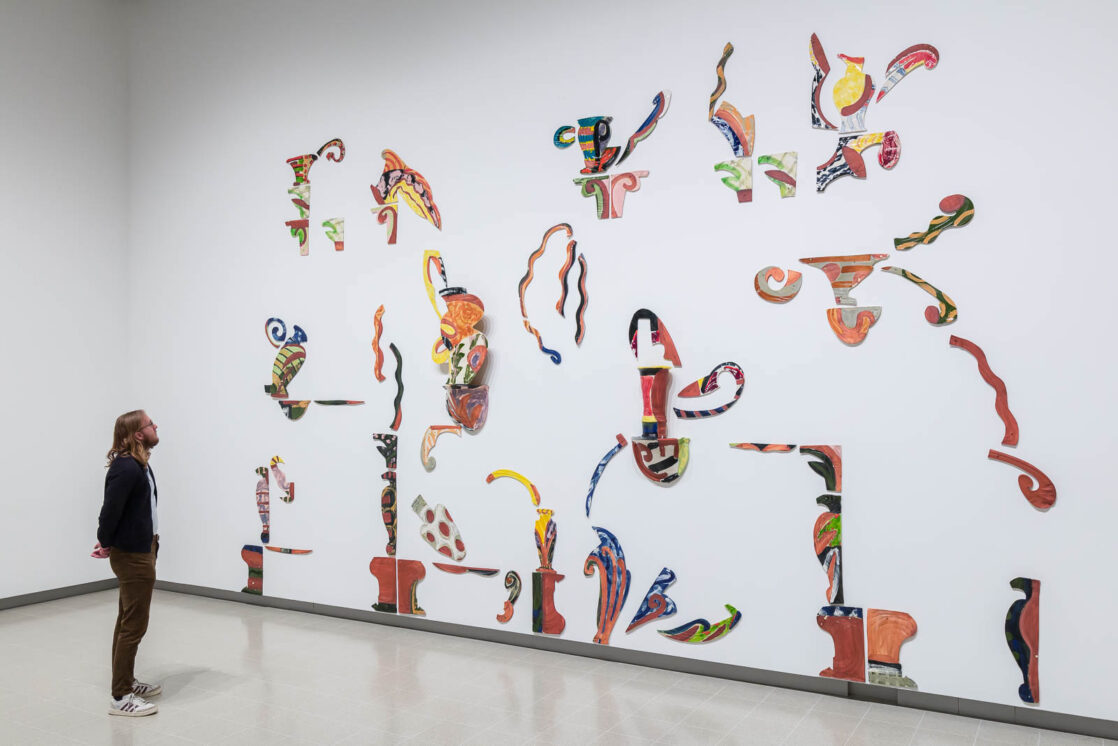
Installation view of Betty Woodman, 'House of the South', 1996, 403.9 x 624.8 x 24.1cm
The Hayward Gallery’s new exhibition Strange Clay: Ceramics in Contemporary Art is the first large-scale group exhibition in the UK to consider ceramics in contemporary art practice. The history of ceramics as a medium for contemporary art has encountered resistance over the years and this exhibition of 23 international artists aims to challenge and shift the discussion and reception of the medium. The narrative is one of exploration and celebration as it considers the compelling and innovative ways that artists are experimenting with ceramics.
It is Strange Clay because the work shown departs from conventional ideas of what ceramics are supposed to look like, as well as engaging with aspects of the surreal and uncanny. One observation, from the Hayward’s Director Ralph Rugoff, is that these artists take advantage of the unique ability of ceramics to sit between painting and sculpture, to engage viewers with colour and composition, as well as with form and structure.
This is a particularly helpful idea when thinking about the distinctive place of ceramics in contemporary art practice. The resulting work reveals astonishing surfaces and forms, and unexpected shape and scale. The work is tactile too, provoking viewers to wonder what it feels like as well as to think about what it looks like. In the present digital era, this refocusing on the connection between touch and sight seems like an important one.
While the exhibition’s focus is on ceramics in contemporary art, both from pioneers of the practice and emerging artists, the practice itself goes beyond the contemporary to open up more historical lineages in the stories these works have to tell. Through the featured artists, the exhibition’s curator, Cliff Lauson, has no designs on encyclopaedic coverage, but rather is interested in showing a broad spectrum of work from artists who are pushing the boundaries of ceramics in different ways.
There is a great deal of space in this exhibition too, and that is a brave and deliberate strategy to give the work presented an opportunity to breathe, to occupy space in a different way, and give the viewer time and space to reflect and develop a more in-depth perspective on each artist and their work.
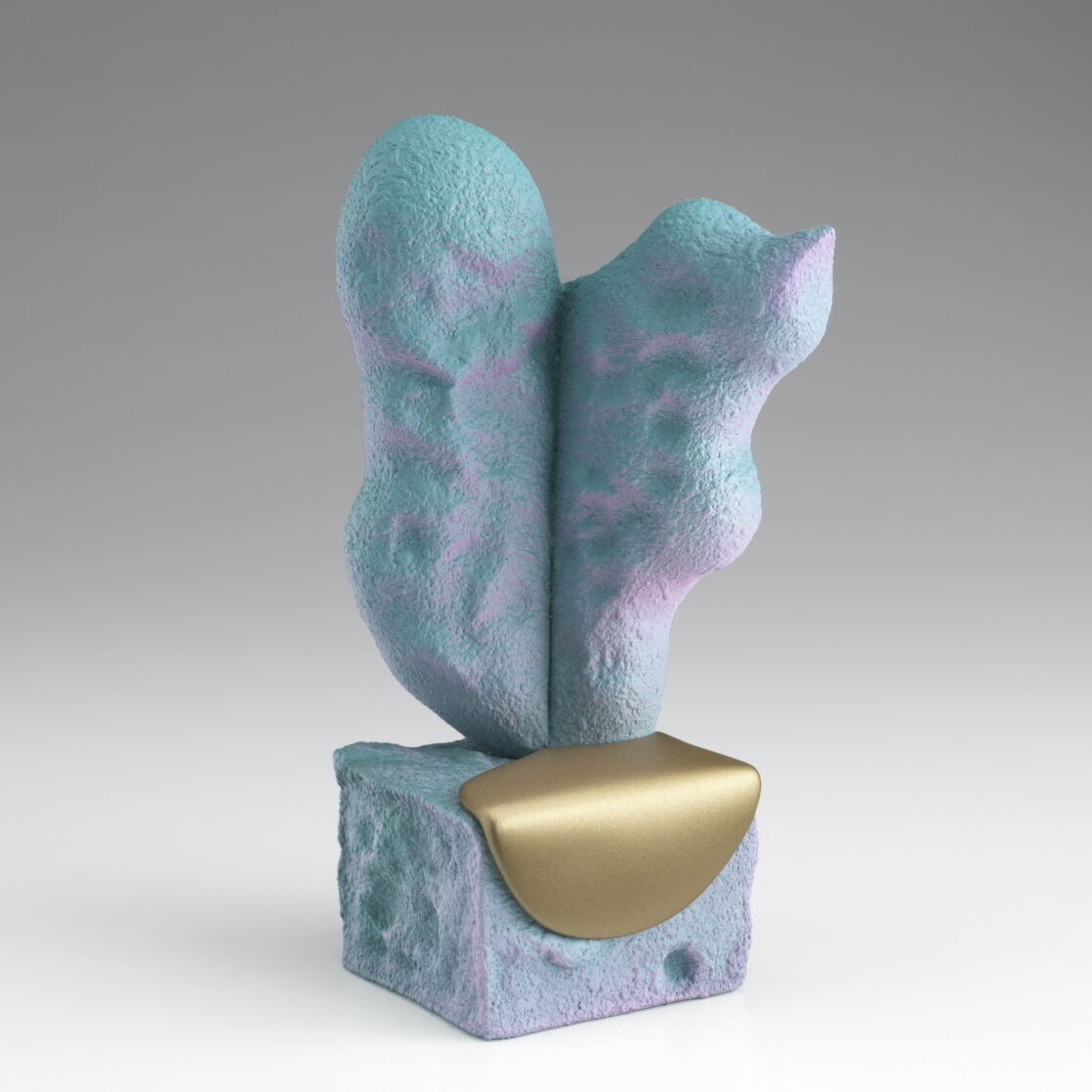
Ron Nagle, 'Schmear Campaign', 7 x 3 x 3.75 in
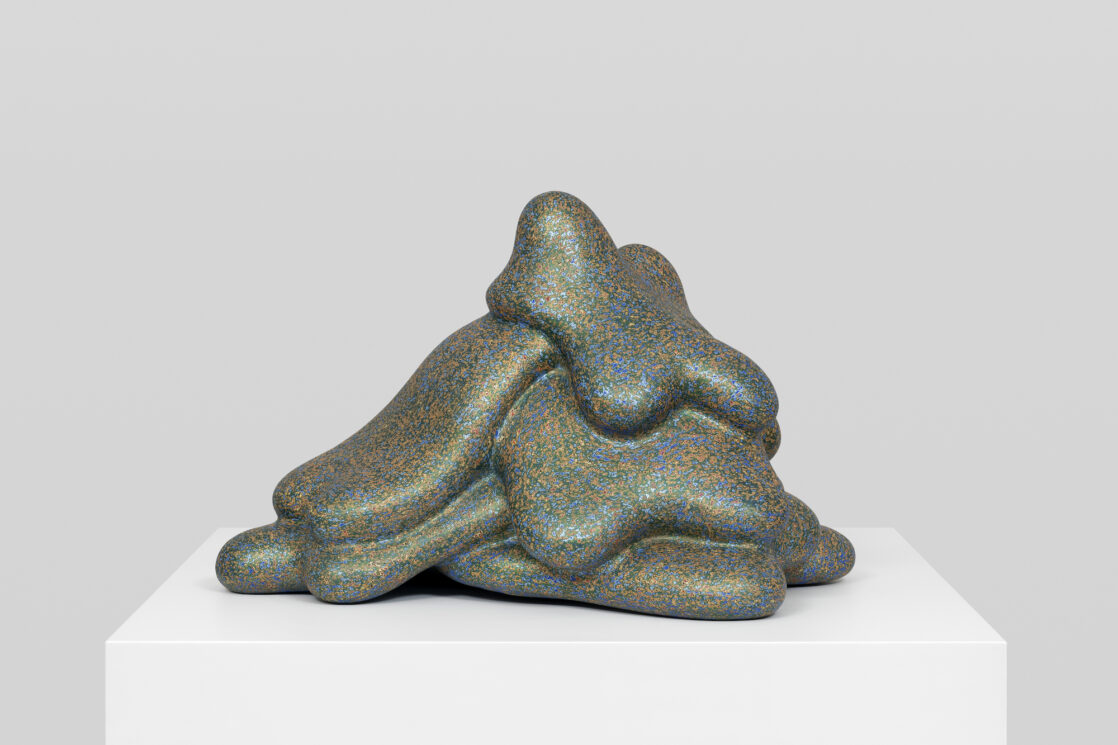
Ken Price, 'Oki', 2007
RANGE OF WORK
Among the pioneering ceramic artists included in the exhibition are Betty Woodman (who used painterly glazes), Beate Kuhn (who applied glazes with a spray gun or brush), Ron Nagal (who fused traditional materials with industrial substances) and Ken Price (who used car enamel and lacquer to achieve slick surface finishes). Then, the established careers of another generation of artists such as Edmund du Waal (minimal poetics), Grayson Perry (socially engaged narratives) and Magdalene Odundo (body and vessel), come sharply into view.
Importantly, the exhibition also includes the work of emerging artists such as Lindsey Mendick, Serena Korda and Leilah Babirye, all of whom create tableaux of one kind or another. There is an immense range of work to cover in terms of how artists approach their medium, as well as global and generational reach, so the exhibition can only take a broad-brush approach.
SCULPTURES AND FORMS
Edmund du Waal’s installation atmosphere, 2014, contains 286 porcelain vessels in nine vitrines of varying opacity suspended from the ceiling. The work responds to JMW Turner’s statement that ‘Atmosphere is my style’ and it evokes floating cumulus-like clusters above the viewer while shadows are caste around the room. In its present incarnation atmosphere reframes the brutalist architecture of the Hayward Gallery. De Waal said he hopes visitors will lie on the floor and gaze upward.
Lui Jianhua’s Regular/Fragile, 2002-3, contains hundreds of individual items too. Together the 981 ceramic pieces – clothes, toys and household objects all made in white porcelain – respond to a series of aviation disasters in China in 2002 and reflect on the vulnerability and value of human life. Jianhua’s training in working with porcelain began in Jingdezhen, a city with its own long history in ceramics.
Meanwhile, the work of Iranian-born artist Shahpour Pouyan, My Place is the Placeless, 2017/22, relates to his place in the world. In 2014, Pouyan took a DNA test and discovered that his ancestry extended to 33 different countries. After researching the architecture of each one, he represented each country with a roof structure distinctive to the locale.
Lubna Chowdhary’s ceramic tiles from her Sign series might appear to be precision made by machine, but surface imperfections and uneven glaze tones tell a different story. Tiles in Sign 7 fit together with precision, contradicting their handmade finish.
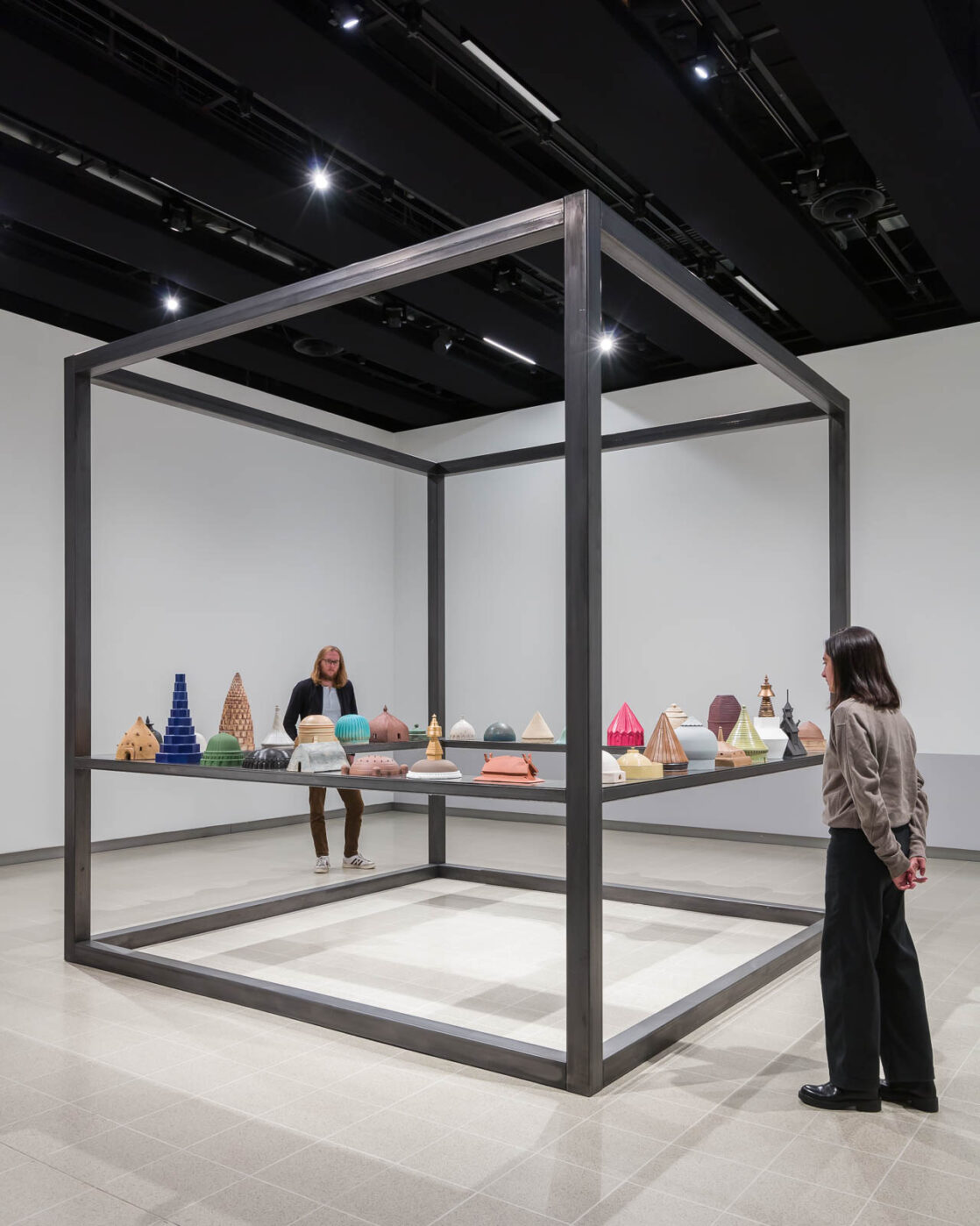
Installation view of Shahpour Pouyan's 'My Place is the Placeless, 2017/22'
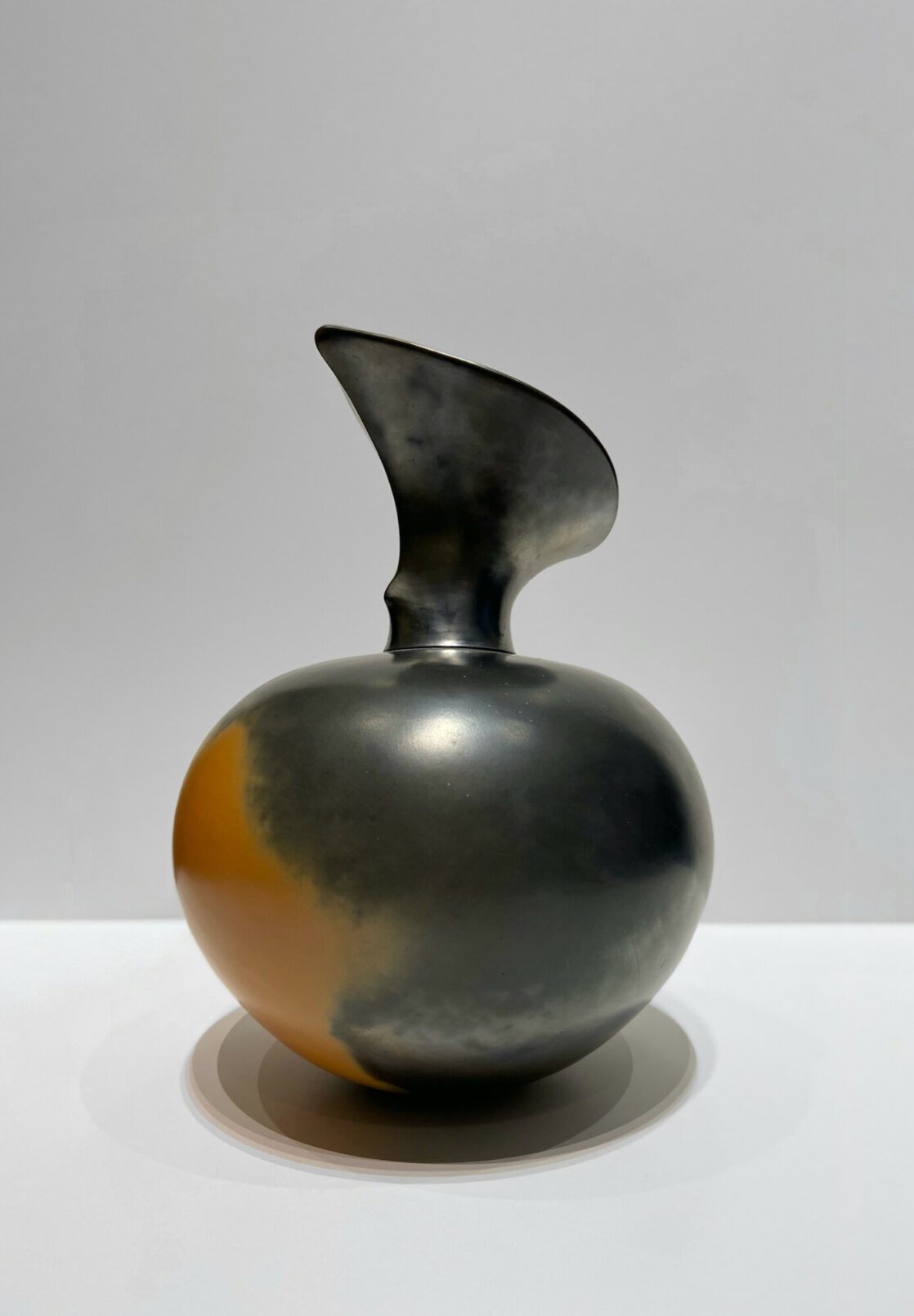
Magdalene Odundo - Untitled (Vessel)
Creating very different forms, Brie Ruais (see banner image) draws inspiration form the American desert and compares her work to physical and psychological scars. In Uncontrollable Drifting Inward and Outward Together (130lbs times two), 2021, she worked with twice her bodyweight in argil clay with a white cracked glaze to create crater-like forms evoking aerial views of mining sites. It is powerful work.
Magdalene Odundo’s sculptures simultaneously evoke the human body and the clay vessel. Bulbous bellies, curved necks and throats, alongside the vertebrae-like bumps of a human spine, all point to Odundo’s belief that the body itself is a vessel.
Klara Kristalova’s installation Far from here, 2022, is lodged in myths and fairy tales as 18 stoneware figures occupy a hilly vegetative landscape. Kristalova uses glazes in a painterly fashion, embracing the imperfections of runs, drips and blends on the surface of her sculptures.
Elsewhere in the exhibition, Leilah Babirye’s extraordinary sculptures such as Nakawaddwa from the Kuchu Ngabi (Antelope) Clan, 2021, combine glazed ceramics with wood, wax, wire, and found objects such as bicycle chains and inner tubes. Babirye’s work explores her experience in her native Uganda where queer and trans people are often referred to as ‘abasiyazi’, the inedible part of sugar cane, thrown away as rubbish. Her work elevates and celebrates the queer community.
CERAMIC STORIES
Each artwork in this exhibition has its own story to tell. The artist’s explorations in ceramics are technical and thematic as they think through making, bringing their ideas into some sort of manifestation in the work. It is that physical presence, and its condition between painting and sculpture (still important categories in art), that give ceramics in contemporary art such significance in present times.
Outside of conventional art historical categories, set apart from the digital realm, beyond what is normally seen in art galleries and museums, closer to everyday objects in our homes, these works are both strange and familiar, turning our gaze back on ourselves and our place in the world. At the heart of it all, still, is the vessel, or container, holding the history of ceramics in dialogue with contemporary art practice. These works prod and provoke in ways that only contemporary art can, asking questions and quietly insisting on answers.
Strange Clay, Ceramics in Contemporary Art at the Hayward Gallery, until 8 January 2023
Photography: Mark Blower; courtesy of the Hayward Gallery
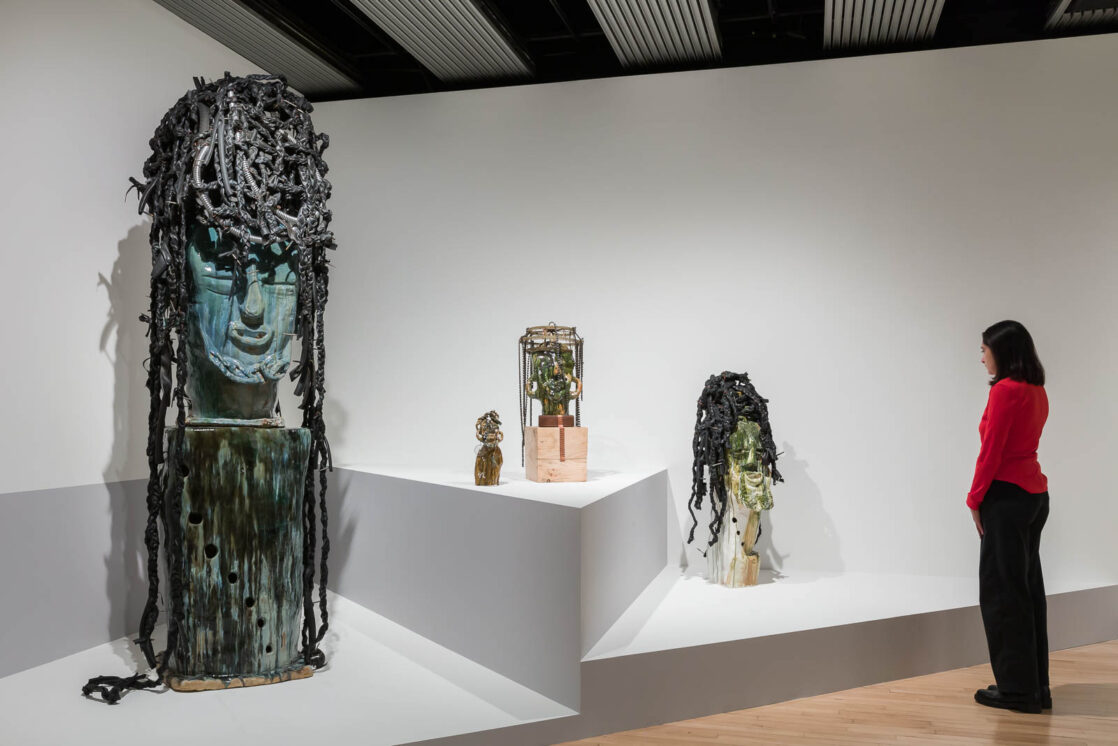
Installation view of Leilah Babirye